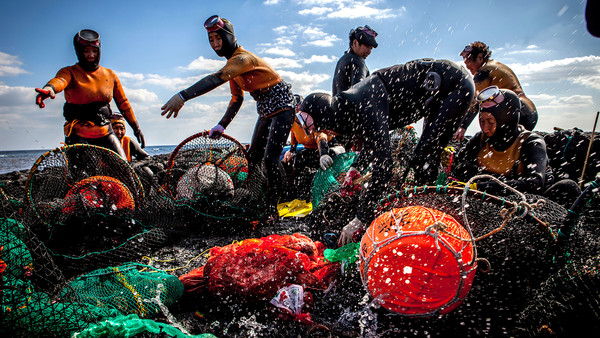Cheju’s Haenyeo Tradition Continues Despite Smaller Numbers
Below is a good read in the Financial Times about Cheju’s female divers called “haenyeo” for those that have not read about them before. I think what will end the haenyo tradition is the small pay the hard work earns. A top haenyeo earns up to $25,000 a year, most earn half that number according to the article requiring them to often work second jobs as farmers:
Each of the elderly women utters a distinctive cry as they surface around me from the bitterly cold East China Sea, clutching fistfuls of seaweed. From my left comes a sound like the bleating of a goat; ahead, a determined groan of endurance. All of them are whistling too, an ancient technique to expel carbon dioxide from the lungs. Occasionally, the wetsuit-clad grandmothers exchange a few words after depositing their seaweed in sacks tied to orange buoys beside them. But none of them rests for more than a minute before plunging to the seabed once more — a rhythm they maintain for five hours.
These are the haenyeo (sea women) of South Korea’s Jeju island, who have dived in search of seaweed and shellfish since at least the 17th century. Their work is one of the country’s most celebrated traditions but one that many islanders fear could soon be consigned to the past.
Traditionally a job handed down from mother to daughter, haenyeo life has been shunned in recent decades by nearly all the girls born in Jeju’s seaside villages, who have tended to favour more comfortable lives in the island’s two cities or on the mainland. From more than 14,000 in the 1970s, the number of haenyeo has dwindled to fewer than 4,500 today. [Financial Times]
You can read the rest at the link and I recommend watching the video included with the article as well.


